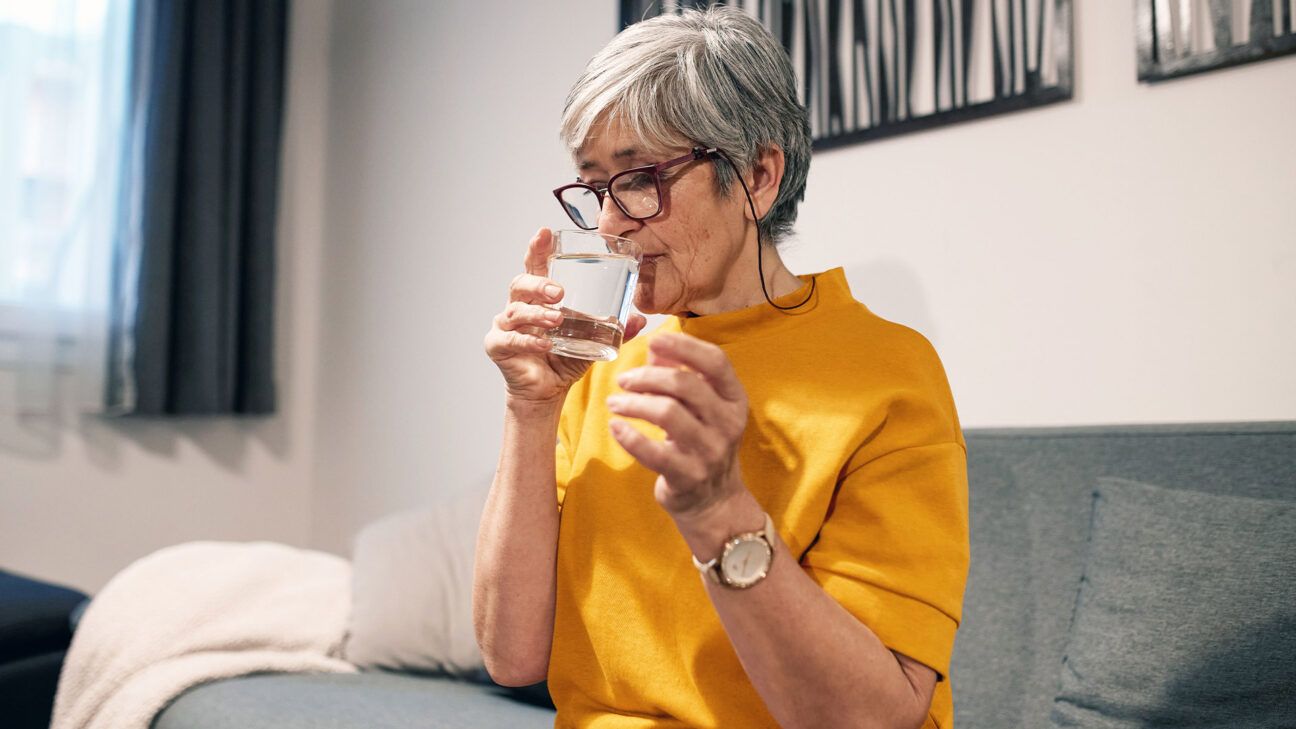
- Dry age-related macular degeneration is an eye disease that can lead to blindness. It affects millions of Americans.
- An over-the-counter formulation of antioxidant supplements appears to prevent progression of the disease, even in its advanced stage, known as geographic atrophy.
- There is no cure for AMD, and current pharmaceutical options can be cumbersome and expensive.
A widely available formulation of antioxidant supplements appears to slow the progression of dry age-related macular degeneration (AMD).
Dry AMD is a common eye disorder in people aged 55 and older that causes blurred vision.
As the name suggests, this disease occurs naturally during aging and is more common in older people. It may have little or no effect on vision, but can also progress to a more serious, vision-threatening form called
According to recent estimates, dry AMD affects nearly
There is no treatment to reverse the damage caused by dry AMD. However, new evidence suggests that a cocktail of over-the-counter antioxidant supplements may significantly slow disease progression, even in people with geographic atrophy.
In an article published this month in the journal OphthalmologyResearchers at the National Eye Institute found that antioxidant supplementation slowed progression by up to 55 percent over three years compared with a placebo.
“These results are very significant because geographic atrophy affects approximately
Dr. Theodore Leng, associate professor of ophthalmology at Stanford Medicine, who was not affiliated with the study, told Healthline, “This study is great because it really confirms some of our suspicions about vitamin supplementation in this specific form of advanced macular degeneration.”
Researchers conducted a post-hoc analysis of two major clinical trials that previously investigated the link between antioxidant supplementation and progression of dry AMD. These trials, known as the
Initial studies showed that taking this combination of supplements reduced the risk of progression from intermediate to advanced AMD by a quarter. However, there was no evidence that the supplements slowed progression in people whose eyes already had geographic atrophy, the most extreme form of dry AMD.
Keenan and his team wanted to know if the
“Our study shows that oral supplements have an important role even when geographic atrophy is present,” he told Healthline.
Specifically, they found that over a three-year period, the eyes of people with geographic atrophy who took antioxidants had 39.8 microns of disease progression, compared to 73.2 microns in the eyes of those taking a placebo. That’s a 55 percent decrease in progression just from taking an antioxidant supplement.
The vast majority of AMD cases, about 90%, are dry AMD. However, about 10% of AMD cases can progress to another form, called wet AMD.
Dry AMD is associated with large yellow protein deposits under the retina, called drusen. These deposits damage a small but important area at the back of the eye, called the macula, which allows your eyes to focus precisely on objects in front of you. Dry AMD can, but does not always, progress to geographic atrophy, which can lead to permanent vision loss.
“Imagine you have a camera or a computer screen and you have dead pixels on the screen. That area of dead pixels slowly expands over time. That’s basically the experience of the patient who has geographic atrophy. They have areas of the retina that are dead or non-functional and that area grows concentrically,” Leng said.
Sometimes wet AMD can develop. Wet AMD or neovascular AMD is defined by the abnormal presence of blood vessels under the retina that can cause swelling and bleeding. This bleeding and fluid buildup is what gives the condition its nickname “wet.”
Wet AMD tends to be more severe, progresses more rapidly, and always affects central vision in the macula. It is still considered an advanced stage of AMD.
Currently, AREDS2 antioxidant supplements only appear to be beneficial for dry AMD, not wet AMD.
“People with geographic atrophy should benefit from the AREDS2 formulation supplement. Additionally, our previous research has shown that a healthy diet (particularly a Mediterranean-style diet) and avoiding smoking are strongly associated with slower rates of atrophy growth. So a healthy lifestyle is important in addition to supplements,” Keenan said.
A combination of antioxidant supplements known as AREDS2, which includes vitamin A, vitamin C, copper, zinc, lutein and zeaxanthin, helps slow the progression of dry AMD, even in the advanced stage known as geographic atrophy.
A new study found that, compared to placebo, people taking the antioxidant formula had 55% less disease progression.
Supplements are not recommended for wet AMD, a less common but more serious form of AMD.